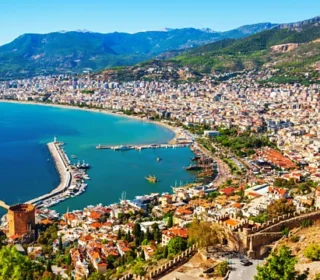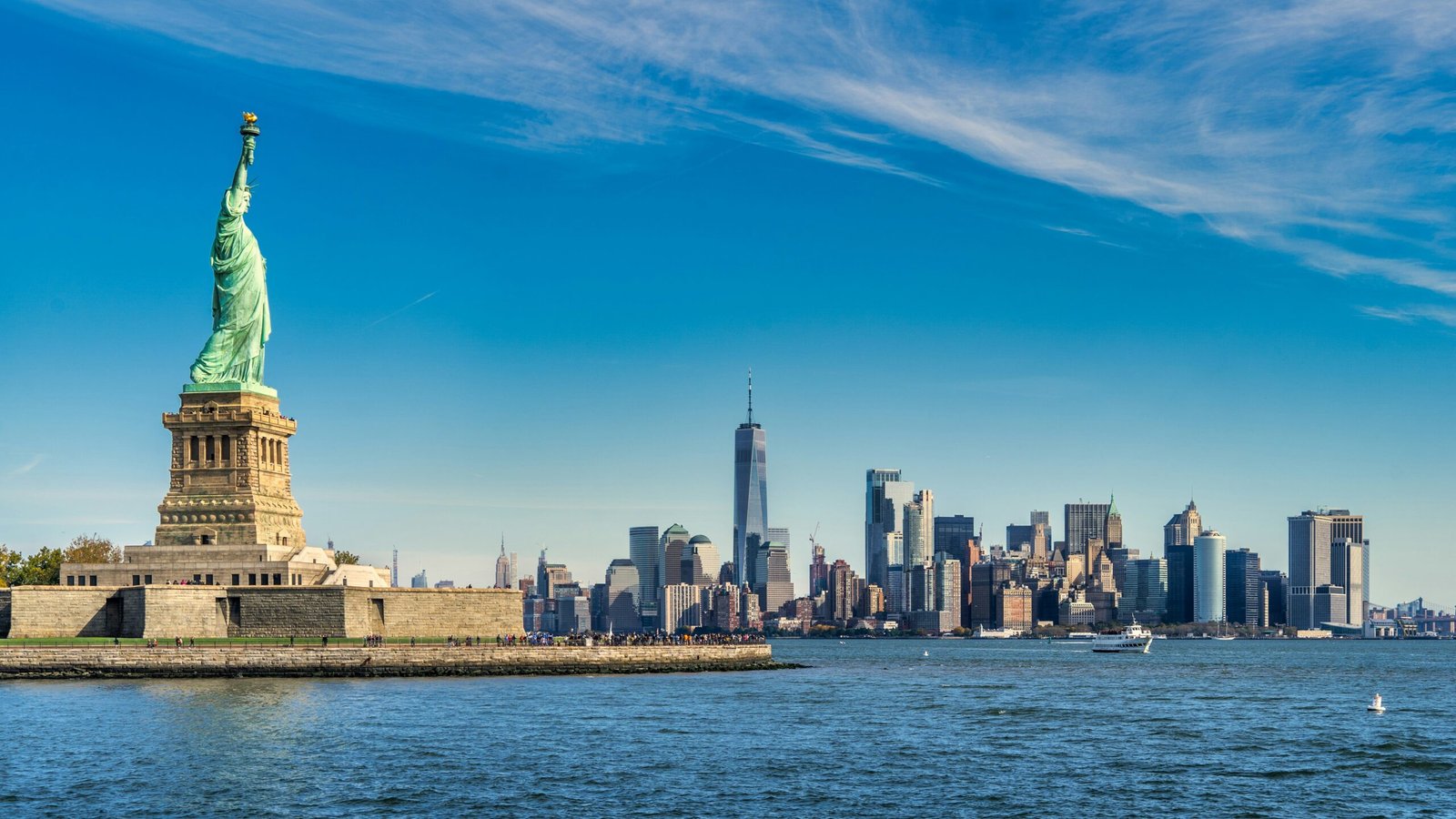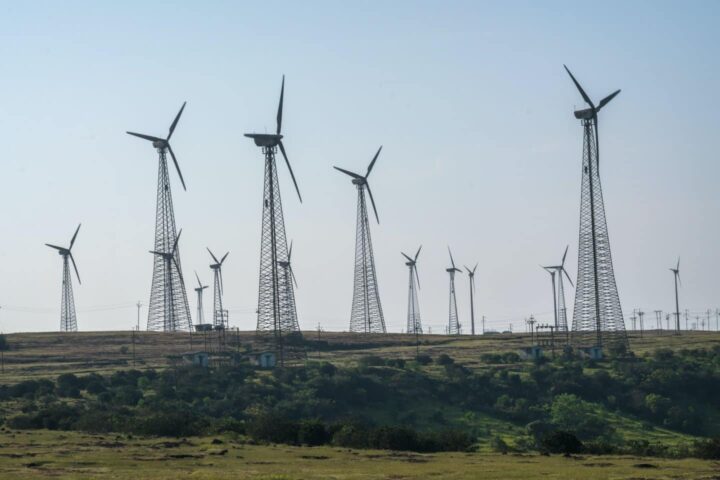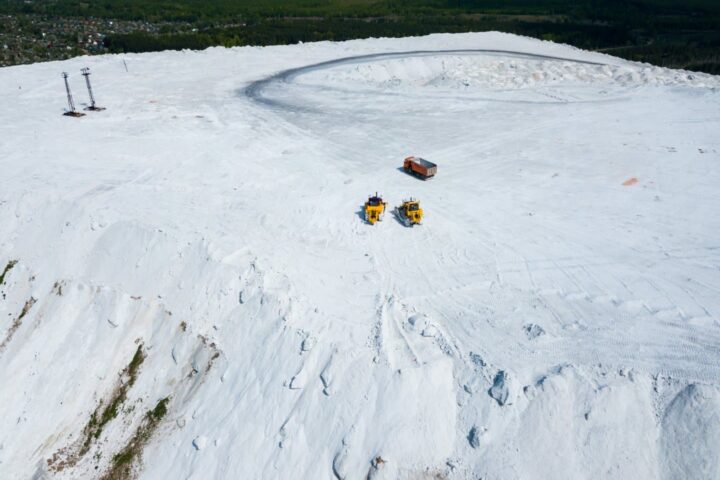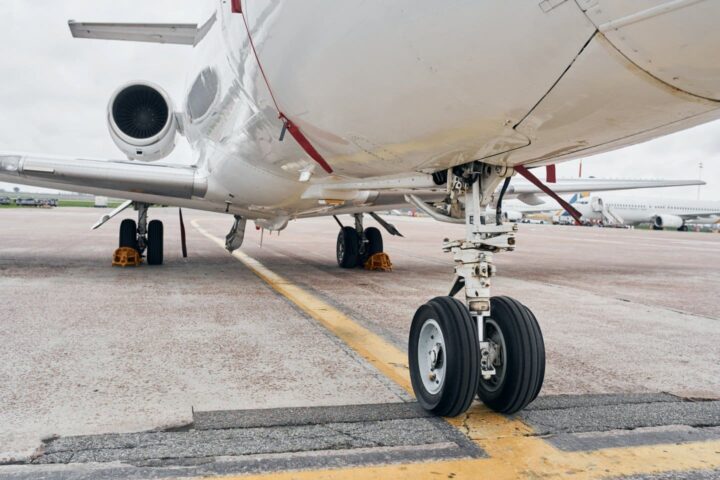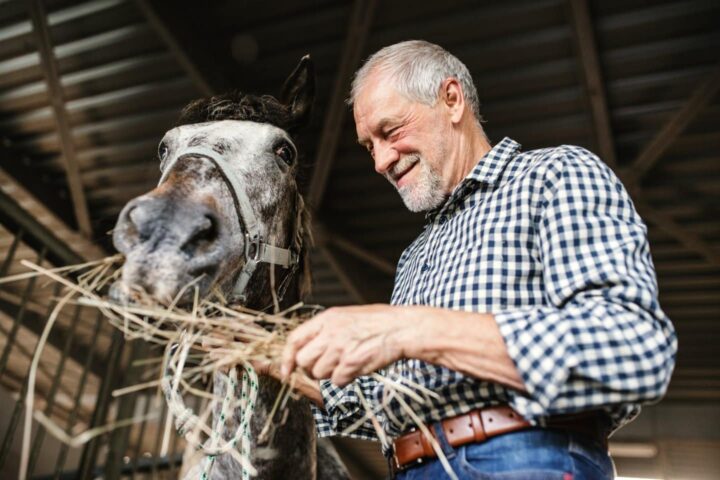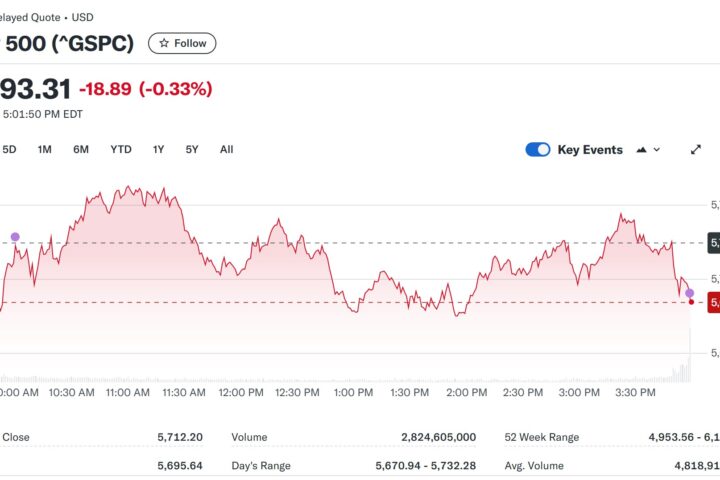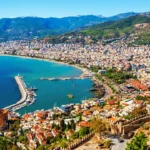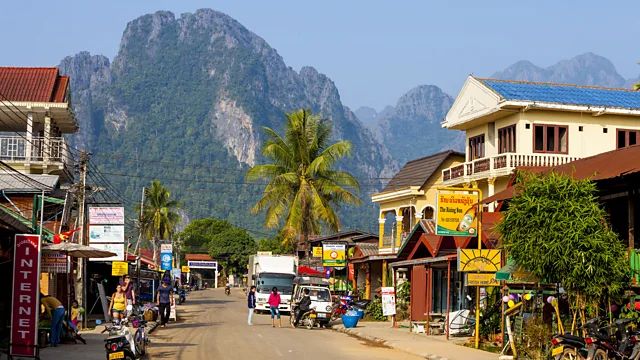
Once notorious as a debauched riverside party town, Vang Vieng had cleaned up its act in recent years, but is now in the headlines for all the wrong reasons once again.
“Just make sure you push yourself off the end when you reach the bottom of the slide. We had someone die on those rocks down there last week.”
It was 2010, and for the young me – teenaged, inebriated and on my first ever backpacking trip through Southeast Asia – health and safety were far from the top of the agenda.
Nevertheless, I heeded the advice offered by the dreadlocked Australian bartender, and, as I reached the end of the tiled slide, gave myself an almighty push into the air above the Nam Song River, throwing out a warning yell to alert the revellers in the water below of my clumsily impending cannonball.
Vang Vieng, a town of around 25,000 people on the banks of the Nam Song River in central Laos, has for decades been a firm fixture on the so-called “Banana Pancake Trail” – the backpacker path through Southeast Asia named for the go-to breakfast at so many guesthouses and cafes along the route. Once notoriously known as a debauched riverside party town, Vang Vieng had cleaned up its act in recent years, but it is now in the headlines for all the wrong reasons once again, with a number of foreign tourists having died after ingesting drinks laced with methanol.

Vang Vieng became famous as a party destination in the late 1990s for its plentiful backpacker hostels and wooden riverside bars stocked with cheap Beerlao and lao-lao, the local rice whisky often sold with a whole snake or scorpion infusing in the bottle – the intermingling of the venom and the alcohol believed to bestow medicinal benefits to the drinker.
Back then, the iconic mode of tourist transport in Vang Vieng, known simply as “tubing”, involved travellers floating downriver on the inflated inner tube of a tractor tyre, disembarking at the riverside bars to play drinking games – beer pong was a particular favourite – and throwing themselves off ramshackle rope swings and slides overhanging the river. The tubing practice supposedly originated in 1999 with a local farmer, Thanongsi Sorangkoun, who lent the inner tubes to his workers to allow them to unwind on the river. It quickly developed into just as big a fixture on the itinerary of many backpackers as the notorious Full Moon parties of Thailand’s Koh Pha Ngan.
By the time of my visit in the early 2010s, Vang Vieng was a place of loose morals, light policing and Wild West tourism. Besides the riverine activities, the town was famous for its “happy bars” where blissed-out, red-eyed Westerners would sit before untouched plates of food, gazing up at televisions playing endless re-runs of Friends and Family Guy. Sit down in one of these establishments and open the menu, and, alongside the usual backpacker fare of pizzas, noodles, burgers and fried rice, you would find a veritable pharmacopeia: pre-rolled spliffs, mushroom pizzas, mushroom shakes – mushroom everything.
Needless to say, the combination of a shallow river, sharp rocks and unregulated rope swings, combined with the cheap availability of alcohol and psychedelic drugs, proved dangerous. In 2011, the town’s hospital recorded 27 deaths due to drowning or suffering serious trauma against the river’s rocks; that figure did not include patients taken directly to Vientiane, Laos’ capital, which is two hours away by road. The same evening as my adventures on the “death slide”, as it was known locally, I had to help take a fellow tourist to the hospital after she shattered her ankle falling into the river. As a group of us helped her up the riverbank towards the nearest road, an ambulance could reach, we passed through a forest ablaze with fireflies – a reminder that, for all the madness, natural beauty cannot help but intrude in Vang Vieng.
It was that same beauty that drew backpackers here in the first place. This is a rural area, and the patchwork of rice paddies that emanate from the banks of the Nam Song River are ruptured with soaring mountains of karst limestone, ripe for hiking, climbing and exploring caves sheltering gilded Buddhas. And so in 2012, when the Laos government finally decided enough was enough and clamped down on Vang Vieng’s tubing and happy bars, they repositioned the town as an outdoor adventure destination.
The makeshift wooden bars with their riverside swings and slides were torn down and the tubing centre was closed. Tubing later returned, but in a much reduced and more heavily supervised capacity; the same is true of the town’s nightlife. More operators sprang up offering activities in the countryside outside Vang Vieng: kayaking on the river, hiking and hot air balloon rides. It’s been a successful rebrand, despite the recent tragedy suggesting that a dangerous side to Vang Vieng still exists.
Tourism has changed a great deal since 2012,” said Stéphane Vigié, co-owner of Riverside Boutique Resort on the banks of the Nam Song. “New visitors are no longer primarily attracted by the party reputation of Vang Vieng but rather by the outdoor activities and scenery it can offer. In fact, they hardly go to the town centre anymore. Instead, they can be found hiking in the countryside or kayaking on the river.”
“Vang Vieng has changed a lot,” agreed Violaine Cleyet-Marrel, co-founder of Above Laos, which offers hot air balloon trips over Vang Vieng. “When we started Above Laos in 2018, Vang Vieng was already starting to be not only a backpacker destination but also a destination for outdoor activities, catering for a wider audience.”
Vang Vieng’s landscapes combine beauty with accessibility. The karst peaks surrounding the town do not form a mountain range, but erupt suddenly from the green river plain like jagged molehills on a smooth lawn. This makes them dramatic without being particularly tall, and the highest viewpoint in the area, Pha Ngern, can be reached in a couple of hours on foot from the centre of town. Kayaking, meanwhile, is the best way to experience the interaction between the Nam Song River and the soft limestone topography: at the cave of Tham Nam Thaem you can kayak right through a mountain, following a tunnel carved by the river. Ballooning, meanwhile, offers a chance to take it all in from above: a bird’s-eye-view over the patchwork rice paddies of the plain, cut through with the serpentine sweep of the Nam Song and riddled with karst caves, like bullet holes in green baize.
The profile of visitors has changed, too, according to Cleyet-Marrel: where once the town was the domain of Western backpackers, the balance has now tipped in favour of Asian tourists. “There are still many backpackers and parties, but there are also many families travelling, couples of all ages and Chinese and Korean groups, as well as Lao people coming from Vientiane for the weekend,” Cleyet-Marrel said. The town is changing physically, too – expanding onto the west bank of the Nam Song River, with more rural accommodations outside the town in quieter surroundings.
New transport links have been as transformative as the government clampdown. In 2021, the long-awaited Boten-Vientiane railway opened, joining Laos with China and connecting Vang Vieng with other major Laotian cities in record time.
“The train connects Vang Vieng to Luang Prabang in less than an hour – it used to be five hours of very uncomfortable road,” said Cleyet-Marrel. “There’s also a new highway that connects Vang Vieng to Vientane in 90 minutes. These things have greatly impacted tourism in Vang Vieng, as they bring people here for two or three days who might have not come before. That’s contributing to the change of atmosphere.”
While the influx of Chinese visitors is largely accounted for by the new international train, the interest of Korean tourists in Vang Vieng goes back to the South Korean reality show Youth Over Flowers, which shot an episode here in 2014.
According to Vigié, the changes seen in Vang Vieng due to the 2012 government clampdown and the new transport links were initially almost too extreme – so much so that they ended up needing an unlikely saviour. “In some ways, the Covid crisis provided a useful pause in the otherwise rapid development of Vang Vieng,” he said. “It forced many businesses to close down and restored a level of tranquillity that was required in order to welcome the new waves of visitors brought by the high-speed train.”
In some ways, the Covid crisis provided a useful pause in the otherwise rapid development of Vang Vieng – Stéphane Vigié
No such respite is available now, however, and the recent tourist deaths show that for all the changes in Vang Vieng, it might not take much for the town to go off the rails again. One of the key determining factors, Vigié said, will be whether or not the central government remains involved enough to maintain some control over the town.
“The tragic events of the past week are a dramatic reminder of the critical importance of government control mechanisms,” he said. “It is very hard to predict how Vang Vieng will develop in the future. It is a very small place and not much is required to put it off balance. But I am personally optimistic.”


